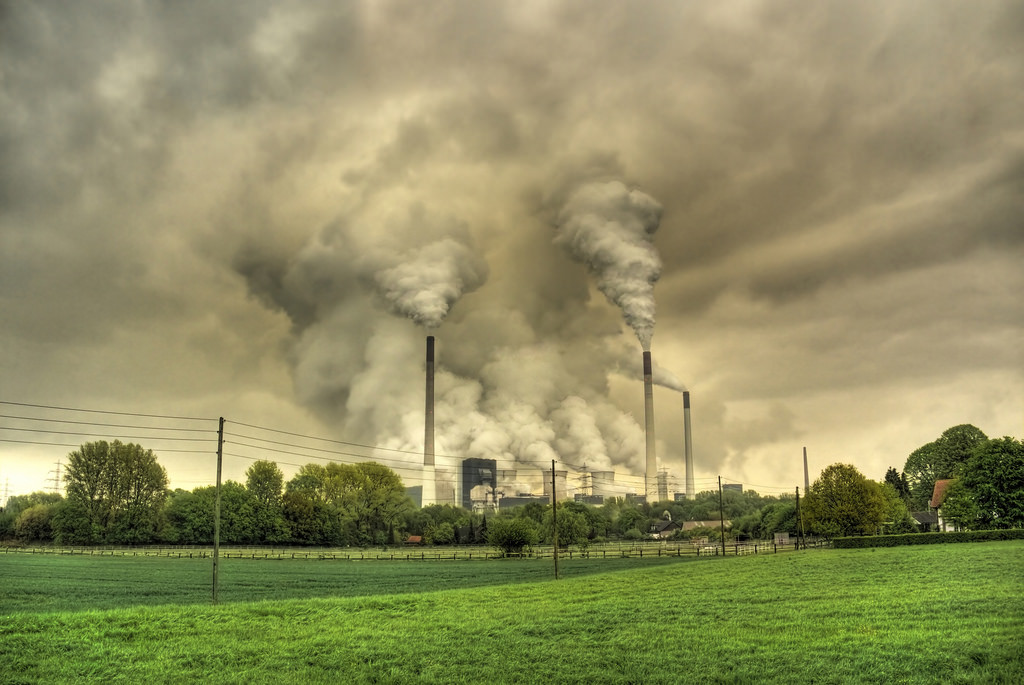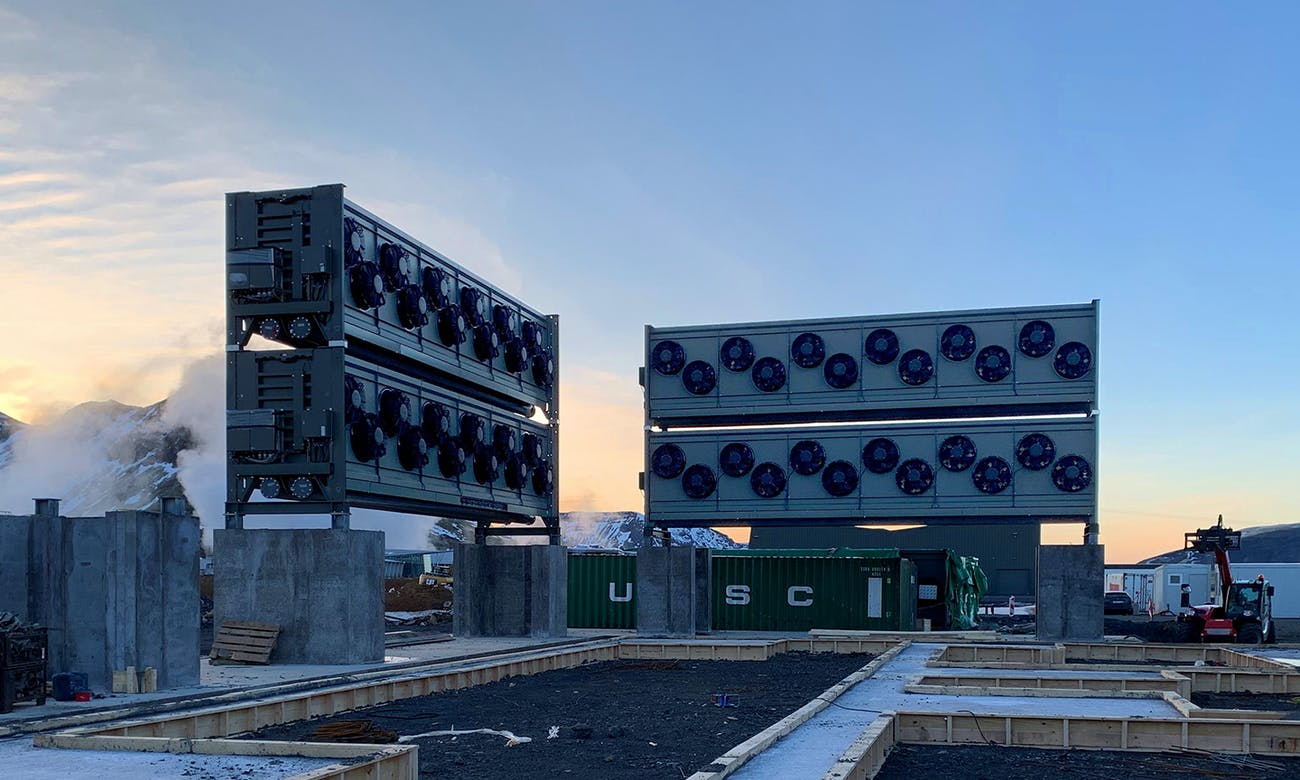When it comes to the topic of climate change, there’s one small and very crucial chemical formula that always gets a mention: CO2, carbon dioxide.
CO2 exists naturally in the air that we breathe, but actually only makes up a tiny fraction of it – around 0.038 percent – which makes CO2 seem pretty insignificant. In reality, however, carbon dioxide is one of the most important greenhouse gases there is, and it plays a decisive role in regulating the Earth’s climate. Once released into the air, CO2 doesn’t break down, but instead accumulates in the atmosphere. There it forms a kind of bell around the earth, a bit like the roof of a greenhouse – hence the term “greenhouse effect”. Carbon dioxide is one of the greenhouse gases (others include methane and hylocarbons) that absorbs a wide range of energy—including infrared energy (heat) emitted by the Earth—and then re-emits it. This re-emitted energy travels out in all directions, but some of it returns to the Earth, where it heats the surface. Without greenhouses gases there to control the temperature and keep in the warmth, the Earth would be a frozen -18 degrees Celsius.
Due to rising levels of anthropogenic (man-made) emissions of CO2, the natural balance between CO2 emissions and CO2 storage (natural plants, trees, soil, peatland all function as natural stores of CO2) is disturbed and the temperature of the Earth starts rising to unsustainable levels.
According to the Intergovernmental Panel on Climate Change, in order to prevent the Earth from warming by more than 1.5 degrees compared to the pre-industrial age, not even the most ambitious efforts at avoiding CO2 emissions will be enough. CO2 also needs to be actively removed from the atmosphere. If not, the environmental consequnces are unpredictable, dangerous and potentially uncontrollable.
One important new aspect of climate change mitigation is therefore so-called “negative emissions” technologies (NETs), a range of different techniques that remove greenhouse gases from the atmosphere.
The good news? Research has already identified a whole range of different ways of removing carbon dioxide from the air and in some instances, even turning it into something new. Here are just a few examples.
1. Removing CO2 from the air
Climeworks
On the roof of a waste recycling plant just outside Zurich, Swiss company Climeworks has installed a wall of jumbo-sized air filters that capture CO2, remove it from the atmosphere and store it as a pure gas. The plant is strategically located right next to greenhouse, where that CO2 is used as a natural fertilizer for plants (which of course, thrive when given a generous supply of carbon dioxide). It is said to be able to filter 900 tons of carbon dioxide from the air every year.
“Bio Energy with Carbon Capture and Storage” (BECCS) from Drax
Based in the UK, Drax is a company that works to extract energy from the combustion of biomass, in the form of compressed wood pellets. In order to reduce its CO2 emissions, the company has connected a special CO2 filter to one of its power stations (the biggest renewable power generator in the UK). The filter isolates the carbon dioxide from the flue gases that are released when biomass is used to generate electricity – removing at least one ton of CO2 every day.
CO2 filters don’t have to be industrial ones, of course. The natural process of photosynthesis is of course another way that CO2 is continuously being removed from the air. The Dresden startup Green City Solutions has tapped into this process and created so-called “City Trees” that act as super-effective air purifiers: rectangular constructions covered with a special type of moss that is designed to rid the air of CO2 and fine dust, especially in polluted urban areas, each one is said to have the pollution-fighting power of a whole 275 trees. Smart technology is integrated into the City Trees to automatise the watering of the systems, as well as collect data on air quality and transmit it to the company.
Photosynthesis with artificial leaves
Scientists are also working on a way to artificially imitate what the City Tree can do on its own. For some time now, research has been underway into “artificial leaves” that can imitate nature and convert carbon dioxide by photosynthesis. The problem so far, however: they have managed to make artificial leaves that photosynthesise, but only when they come into contact with pure CO2 – no system has been developed that is able to separate the carbon dioxide from the gas mixture in the atmosphere. But now, thanks to a discovery by scientists at the University of Illinois in Chicago, that’s all changed. They have developed a special membrane made of water and ammonium resin that separates off the CO2 and allows it to be transported from the outside air into the interior of the artificial leaf. The artificial leaf actually metabolises CO2 into fuel and oxygen much more efficiently than its natural counterpart, able to convert up to ten times more CO2 than the real thing! It’s a significant development that could symbolise a huge step in the fight against climate change.
2. Turning CO2 into something new
Pumping CO2 underground – and turning it into rock
Out of sight, out of mind – could be the motto of the technology known as Carbon Dioxide Capture and Storage (CCS). CCS is a process where carbon dioxide is captured, transported to a storage site, and deposited somewhere where it will not enter the atmosphere – most often in rock formations located several kilometres below the earth’s surface where, over time, the CO2 will mineralise and turn into stone.
There has been skepticism about the technology so far, as there is little evidence to prove how long it would take for CO2 stored in this way to become stone, not to mention what would happen if there were a leak and all of the CO2 were to suddenly start to escape. But now the so-called CarbFix project in Hengill, Iceland, has trialled the technology and come up with some promising results. There, a total of 4,500 tons of CO2 were pumped into volcanic soil, and water and hydrogen sulphide was added. The result? After just two years, more than 95 percent of the CO2 had turned into a solid – far faster than the hundreds or thousands of years that had been predicted.
CO2 becomes fertiliser for new Super Foods
We already know that plants need CO2 for photosynthesis. Some plants are particularly hungry and thrive when CO2 levels are super high – algae is one of them. Some particular types of algae, the blue alga spirulina and the green alga chlorella, also have impressive nutrient levels. Startup Mint Engineering has recognised that algae can kill many birds with one stone: Algae could be used worldwide, for example, to combat nutrient deficiency, as biodiesel and as a vegan alternative to gelatine – all while making an important contribution to climate change during growth. In a pilot project, the start-up is breeding algae in so-called “photobioreactors” on the roof of the EUREF Campus in Berlin, where they are then processed into delicious dishes.
Turning carbon dioxide back into coal
Scientists in Australia have managed to come up with a way of turning CO2 back into coal. It involves a new class of non-toxic liquid metal catalysts, which pluck carbon out of the air, to turn it into what is essentially coal. Even better, it works at room temperature, meaning minimum heat energy is required to generate it. Other catalysts researched only work at temperatures above 600°C. The liquid metal catalyst, which contains cerium nanoparticles, is charged with an electrical current. Then it’s added to a solution of an electrolyte liquid and the dissolved carbon dioxide is piped in. In time, the CO2 dissolved gas converts into solid flakes of carbon. Pleasingly, another useful property is that the carbon doesn’t stick to the catalyst, but naturally detaches, allowing the continuous production of coal-like solids.
The drawback? A lot of energy is required for this process. As long as that electricity is generated primarily from fossil sources, every kilowatt hour of electricity consumed also represents CO2 emissions – and the process could therefore end up damaging the climate more than it helps to protect it.
As part of the Carbon2Chem project, various industrial companies are working together with the Max Planck Institute and the Fraunhofer Institute to develop innovative solutions for converting greenhouse gases into precursors for fuels, plastics or fertilizers. The processes usually focus on high-temperature electrolysis, in which water is split into hydrogen and oxygen by adding energy. The resulting hydrogen is then combined with CO2 to form a synthesis gas, from which a synthetic fuel is produced in the next step.
But here there’s the same drawback as the CO2 to coal procedure: The process requires large amounts of energy. In order to keep the reactions as climate-neutral as possible, Carbon2Chem’s projects rely on surplus electricity from renewable energies. However, in order to completely displace crude oil and other fossil fuels from the market or even to ensure a large-scale use of CO2 fuel, energy on a scale that cannot be covered by renewable energies under the current production conditions would be necessary.
So there are many ideas and approaches for actively removing CO2 from the air and making it usable in such a way that it reduces CO2 emissions through industrial processes. However, the approaches to the use of CO2 in particular are processes that require further development for greater sustainability – especially in the energy sector. Filtering and storing CO2 to remove greenhouse gases from the atmosphere can also only be one pillar of global climate protection. Radically reducing CO2 emissions remains the main task of all public and private sectors – especially since this can already be directly implemented today without further research.









